The Evolution of the Garbage Cart
What was once viewed as an unwanted product is now considered a must-have in the industry.

Garbage carts have come a long way since being conceived in the 1970s—they have changed in size and color in addition to functionality and purpose. While there were once only carts for garbage, now carts also collect recycling, yard waste and food waste. And what was once viewed as an unwanted product is now considered a must-have in the industry.
The cart was first developed in response to the needs of a faster, safer and more efficient collection system. Before the late 1970s, manual collection was the only method in use, where a collection worker by hand would collect waste in whatever form it was put out. This system was slow, and it created a lot of injuries since workers were fully exposed to hazards such as broken glass, dog waste, bleach, paint, hypodermic needles, among others.
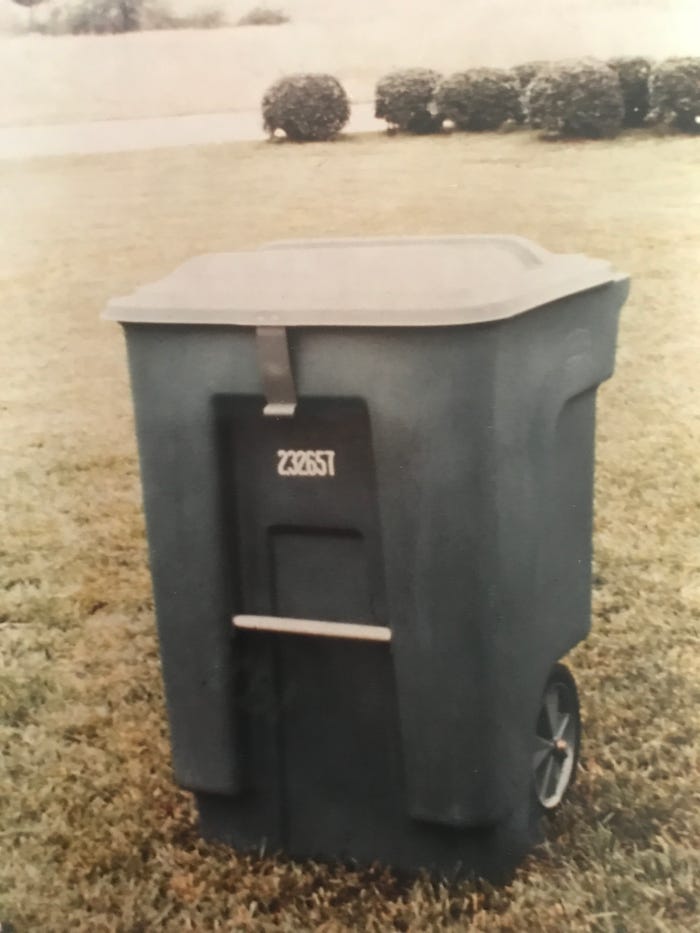
“In the late 1970s, there were really only three companies in the U.S. that began producing carts,” says Jim Pickett, vice president of sales at Toter. “The first cart collection system was run by semiautomatic rear-load and side-load trucks equipped with cart lifters. And in the early 80s, fully automated trucks were invented, and those inventions led to the development of fully automated carts, which were designed differently and had more of a round shape to them. During the time that the fully automated carts came onto the market, some cart companies survived and some didn’t.”
Otto Environmental Systems North America, Inc. was one of the first companies to bring the cart to the United States. It brought a European model and as the market developed, it created domestic versions, which were serviced by rear-loader refuse trucks with semi-automated tippers.
In the late 1970s and early 1980s, cart manufacturers faced a number of challenges, the biggest of which was getting municipalities, government leaders and residents to see the benefits of carts. Many of the manufacturers followed conceptual-sell models, where they would meet with city or county officials and try to sell them on the idea of using carts for collection. But in the early days—more times than not—cities and counties passed on making a switch.

“Looking back at some of the first presentations I ever gave on roll-out carts, I remember being almost laughed out of city halls and sanitation departments,” says Mike Knaub, former executive for Schaefer Systems International. “They didn’t see the benefit of carts at the time, but we knew carts were the future of the industry because they were a good economic arm that the industry could use to improve cash flow and reduce injuries.”
Once carts started to become implemented in multiple municipalities through pilot programs and contracts, citizens were asked to roll their carts to the curb, making them more involved in the collection process than ever before. They were involved with a product that the city was funding and requiring them to use, and they were quickly realizing that lightweight, easy-to-maneuver carts were beneficial.
The Beginning of Recycling
Recycling was first offered via one or more little blue boxes. Some companies allowed customers to place all of their recyclables into their boxes while others provided customers with different colored boxes to sort items like glass, mixed paper and metals. These boxes were picked up manually and presented many problems because of their small sizes.
“After about six to eight years of following this system, companies started tossing around the idea of offering carts for recycling. And they explored two options: co-collection and single stream,” says Jim Pickett, vice president of municipal sales at Toter. “With co-collection, the carts were divided into two compartments so that customers could place their garbage into one side and their recyclables into the other side. This didn’t work well at all because the garbage side ended up being too small for customers, and these carts could only be used with trucks that had a split hopper, which were expensive. With single stream, customers placed all of their recyclables into their cart together. That turned out to be the better option of the two.”
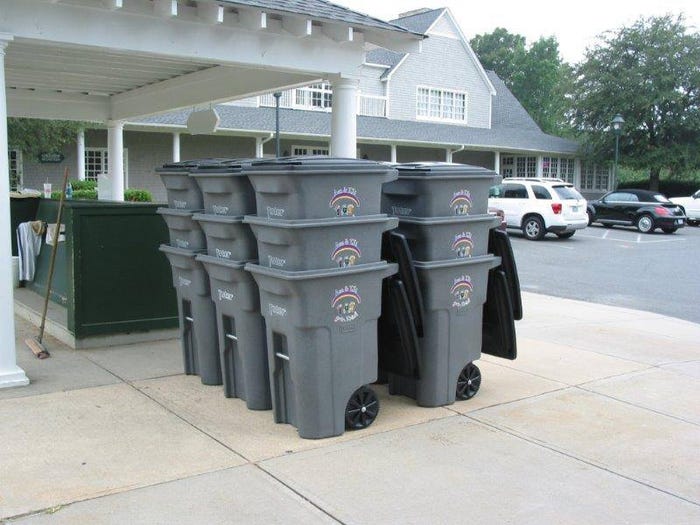
As recycling started to gain momentum, one of the biggest changes that came about was new cart sizes. These new offerings—32-gallon, 48-gallon and 64-gallon carts—allowed customers to replace their 96-gallon recycling carts with smaller carts that were easier to store inside garages or outside of homes.
During that same time, Rehrig Pacific Co., which up to that point predominately produced sustainable products for the food and beverage industry, entered the waste and recycling industry. Rehrig Pacific designed an 18-gallon bin and a stackable recycling container for one of the first curbside collection programs in Northern California.
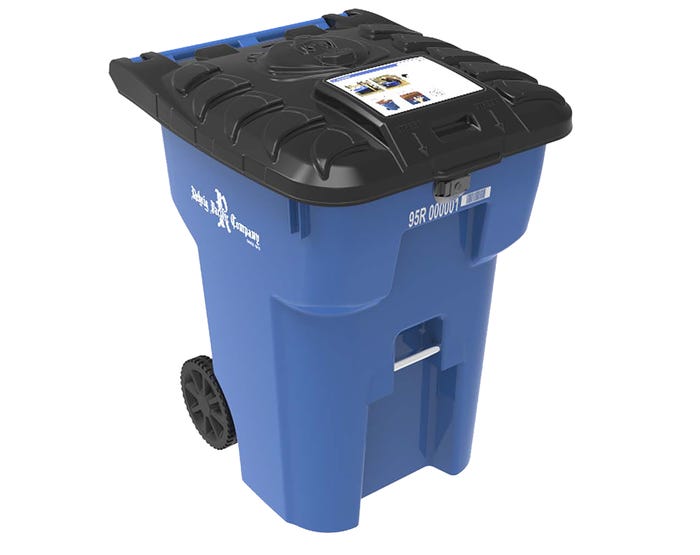
“As we expanded into the waste and recycling industry in the early 1990s, we saw an emerging need for roll-out carts, and we decided to design one in 1992,” says Scott Lukach, vice president of Rehrig Pacific. “That was a tremendous risk for us because the tooling was very expensive at the time, but it ended up being a great move for us after we were able to convince municipalities that automated collection can work both efficiently and effectively.”
After being in the industry for a number of years, Rehrig Pacific started to explore different technologies to better operations, enhance customer service, improve product offerings and utilize data to better understand the trends and needs of the industry.
“Over the years, we have used technology to better incorporate recycled material into our products,” says Lukach. “On average, we can utilize anywhere from 60 to 80 million pounds of recycled material each year, some of which comes from carts that we receive at the end of their useful life so that we can repurpose them and turn them into other products. We have built up a recycling network throughout the country so that we can do our part to keep carts out of the landfill.”

Cascade Cart Solutions also has a cart recycling program. It works with recycling companies across the U.S. so that carts can be collected and broken down to be recycled. This process ensures that Cascade is helping to keep carts out of landfill and is using the best grades of recycled material possible when creating new products.
Toter, meanwhile, facilitates what it calls “dead carts,” which are essentially carts that are at the end of their lives or carts that simply cannot be used because they have an old hauler’s name on them.
“The best thing that municipalities can do is own the carts because if they are unhappy with a hauler or need to switch haulers for whatever reason then they can still use the same carts because they own them and the city or county’s name is printed on the carts instead of the hauler’s name,” comments Pickett.
Besides owning the carts, private haulers or municipalities can also rent the carts for an additional source of income.
The Birth of the ANSI Standards, the Pay-As-You-Throw Concept and RFID Tags
In 1994, the American National Standards Institute (ANSI) issued the first cart safety and compatibility standards in the U.S. This not only improved the safety of the industry, but it also helped resolve the cart and truck compatibility issue.
Before the standards were created, some companies were utilizing European carts or trucks and trying to pair them with American carts or trucks. But European carts weren’t compatible with American trucks and European trucks weren’t compatible with American carts. This issue caused many stresses for municipalities that were spending money to switch over to a cart collection system.
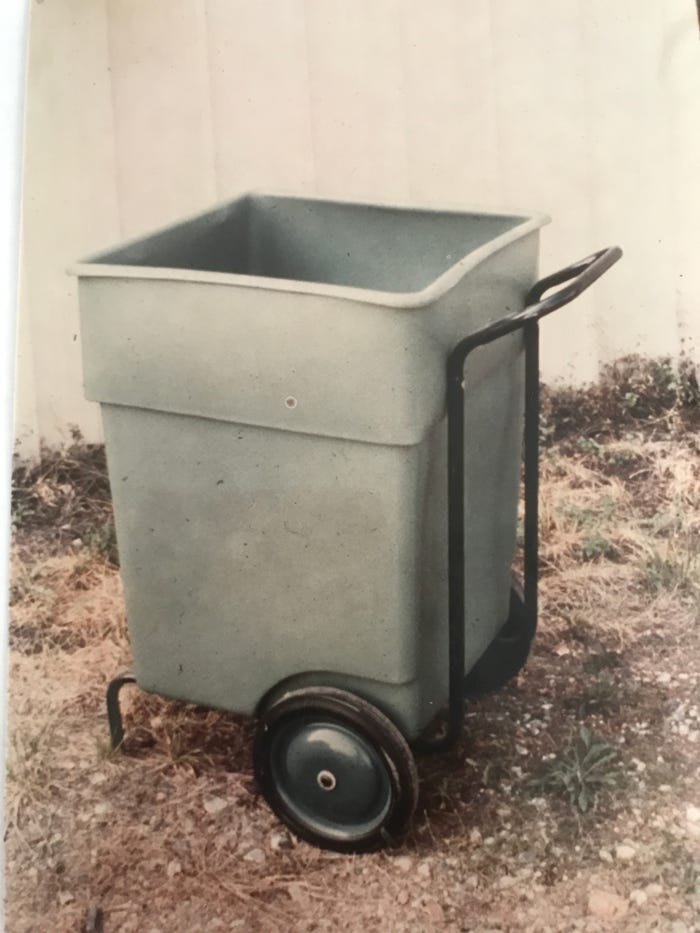
“The municipalities having the issues were the ones that approached the ANSI committee and asked it to draw up these standards,” says Pickett. “It was a really smart thing for them to do, and the safety testing that took place during the development of the standards was huge for the industry because it made manufacturers prove that its cart met all of the safety and design requirements.”
As recycling continued to expand in the 1990s and early 2000s, the pay-as-you-throw concept was implemented to encourage more recycling and a company named Recyclebank entered the waste and recycling arena.
The pay-as-you-throw concept is where residents are charged for the collection of municipal solid waste based on the amount they throw away. This concept is designed to get people to think more about what they are purchasing and throwing away, ultimately encouraging and increasing recycling efforts.
Recyclebank claimed it could triple recycling efforts in communities by equipping carts with radio-frequency identification (RFID) chips and equipping trucks with scales that would weigh the carts when they’re dumped. In addition, the company offered points to customers for recycling and taking green actions.
“We were the first company to partner with Recyclebank to put RFID chips into carts,” says Jo-Anne Perkins, vice president of Cascade Cart Solutions. “It wasn’t easy to do because we couldn’t find an RFID chip that lasted 10 years, which is the life of the cart itself. Our engineering department, which we call the center for innovation, ended up developing an RFID chip that could withstand all conditions within the U.S., last a minimum of 10 years and snap onto the lip of carts. To this day, those RFID chips collect valuable data that can be accessed via our Cart Logic program.”

Design Changes and Improvements
Over the years, the design of carts has changed to accommodate the changing needs of the industry. Trucks have become smarter, therefore carts have become smarter. Customers have started to recycle more, therefore new cart sizes have become available.
“One of the main things driving changes in the design of the cart is how containers are serviced,” says Rob Ellis, director of market development at Otto. “Going from the rear-loader truck with a semi-automated tipper plate to the (automated side loader) increased efficiency and allowed us to create rounder carts that are more flexible and easier to grab.”
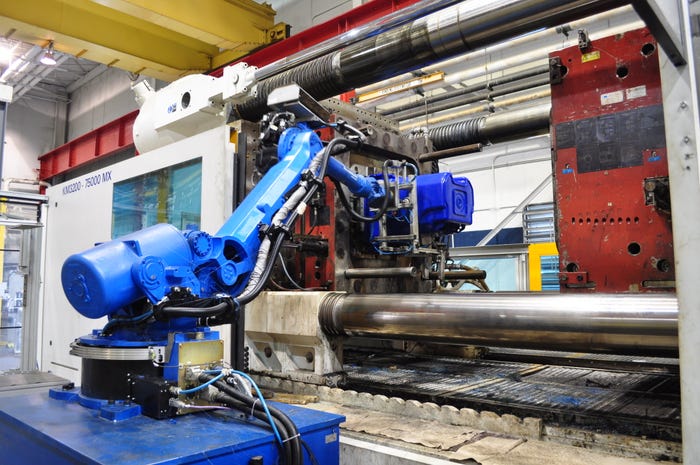
Over the past 25 years, Rehrig Pacific has made multiple iterations of its design. It’s constantly tweaking and improving its design, and those changes are driven by the new technology and advancements in the industry, says Lukach. As trucks become smarter and more efficient, carts need to do the same so that operations can continue to run smoothly.
While Rehrig Pacific has conducted many redesigns of its offerings, Cascade has made minor changes to its products besides adding bear-resistant and organic carts to its inventory.
“When we launched 30 years ago, we built carts in all three standard sizes—32 gallon, 64 gallon and 96 gallon—and we haven’t really veered away from that,” says Perkins. “However, our carts are different than other manufacturers’ carts because we build the pocket into the cart so that it doesn’t become a point of weakness during collection.”
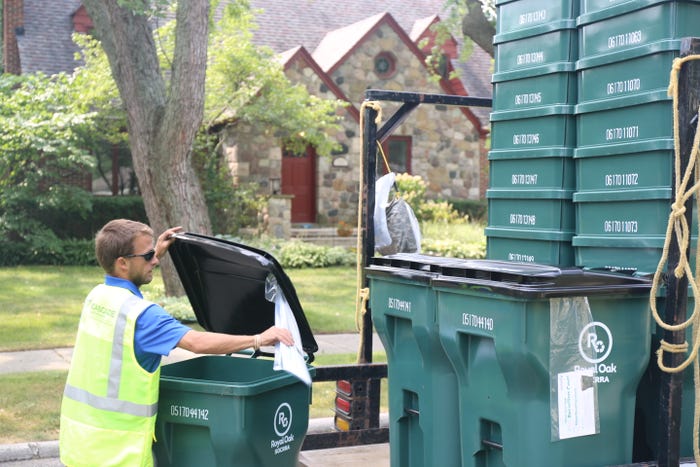
About eight years ago, Perkins started The Pink Cart program to support breast cancer. Both her grandmother and mother passed away from breast cancer at the age of 51, and Perkins wanted to do everything she could to beat the odds.
“Once I turned the age of 52, I wrote a business plan, took it to the American Cancer Society in Atlanta and pitched my pink cart idea,” says Perkins. “The society ended up loving the idea and gave me an exclusive contact to build the pink carts. I really thought if I could sell a couple thousand pink carts that my grandmother and mother would be proud of me. Now, more than 150,000 carts later, I am in awe with what we have accomplished.”
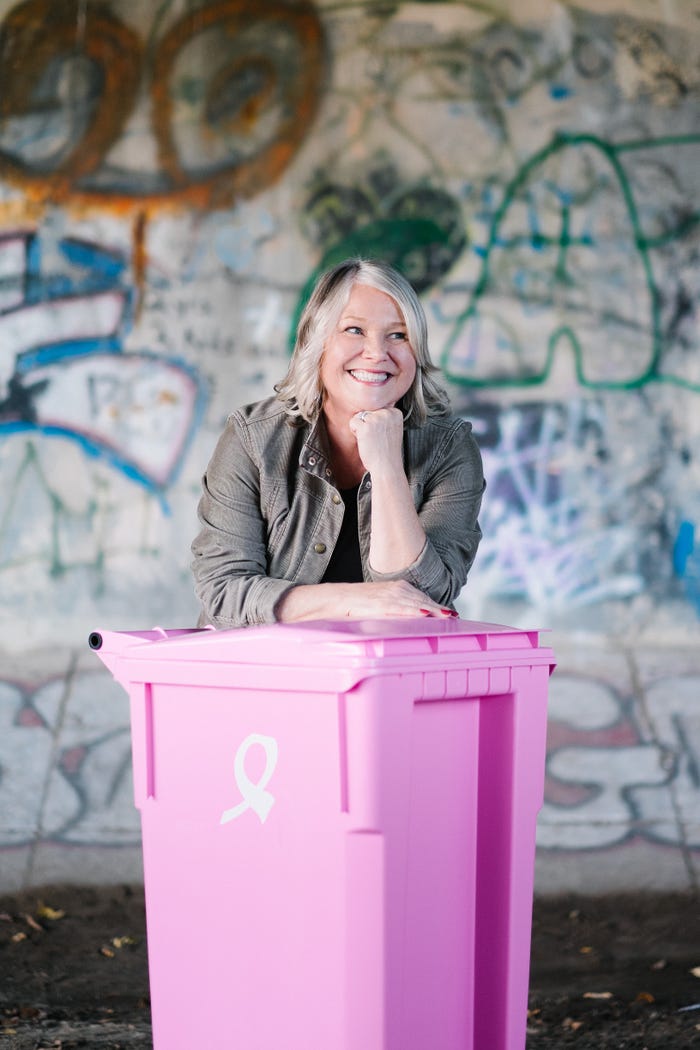
Since launching, The Pink Cart program has raised more than $600,000 for local and national organizations that focus on cancer research and treatments. The carts are offered through haulers in various communities and online for purchase.
The Growing Trend of Curbside Organics Collection
The concept of curbside organics collection entered the industry a few years ago and continues to grow as more companies and municipalities launch pilot and collection programs. To keep up with this increase and demand, manufacturers are launching new product offerings.
“One of the new and exciting projects that we are working on is a curbside organics collection program for the City of Toronto,” says Lukach. “We are designing carts specific to curbside organics collection, which will include automation, ANSI compliance and a locking lid to prevent rodents. We believe this product could grow as curbside organics collection grows, and it could be a great product to offer in the U.S. as well.”
In both Canada and the U.S., companies have learned that the density of food waste is much greater than typical MSW or recycling, so the traditional load ratings under ANSI are not adequate for food waste, according to Pickett. For example, ANSI limits carts to 3.5 pounds per gallon loading, so a 32-gallon cart can only be rated at a maximum of 112 pounds of load, he explains. But with the density of food waste, that 32-gallon cart could weigh in at about 190 pounds, which is well over the allowed and safe load limit.
“At Toter, we meet those heavy load ratings for food waste, but not every manufacturer in the industry does,” says Pickett. “That is a real problem if you’re a city and you want to use 32-gallon carts for food waste because those carts may not be designed to handle a dense material like food waste. This is a first-time problem for the industry because carts have always been strong enough to handle garbage and recycling materials. Now, we have a heavy, dense material that people want to collect, and it’s important that we are doing it in a safe and approved manner.”
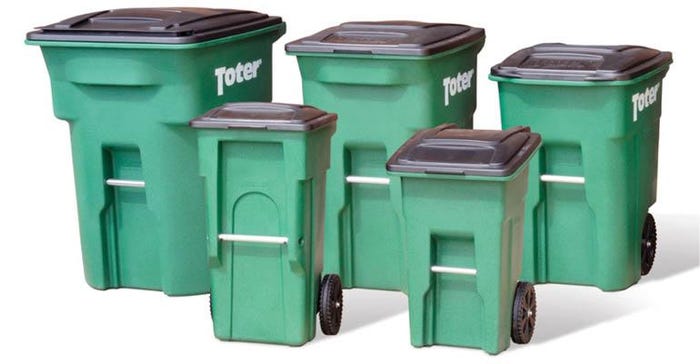
Earlier this year, Toter added 2-gallon and 13-gallon organics containers to its line of products. The 2-gallon organics container is dishwasher safe and designed to fit under a kitchen sink, on top of a kitchen counter, or inside a cabinet door for easier food scrap collection. Equipped with top and bottom hand grips and a wall mountable design, the container also features a snap tight lid to lock in odors.
The 13-gallon organics cart is designed to hold one week’s food waste from a single-family residence to be placed at the curb for collection. It features large handles and heavy-duty wheels and is engineered with a latch for added security and an optional animal lock.
The Future of the Cart
Technology is taking the waste and recycling industry by storm, and manufacturers are gearing up to adapt to the changes. While manufacturers expect more technology and smarter innovations to enter the industry, they don’t think that the design of the cart will change too much in the future.
“People have been experimenting with better ways to collect materials for years, and so far we haven’t seen a viable alternative to the cart and truck concept that we have right now,” says Pickett. “Ultimately, it boils down to the expectations of the marketplace, the durability of carts and the lifecycle costs. I think that outside of the automobile industry, it’s very hard-pressed to find a more universally accepted improvement in life around the house than a cart. It’s clean, neat, covered, controls odors and insects and easy to move. It’s exceeding the status quo right now, and it’s something that works 99 percent of the times it’s tried.”
About the Author
You May Also Like




